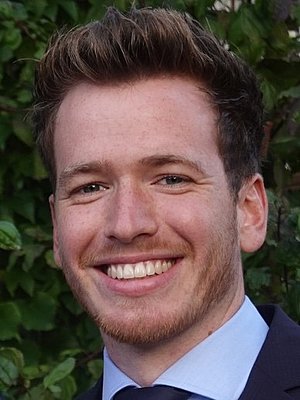Accordingly, I started my RESOLV internship at the Politecnico di Torino in the labs of Professor Roberto Pisano in February 2023 with a feeling of uncertainty. Little did I know that I was about to stumble upon a discovery that would make me the talk of the lab – at least for a day or two.
Fruitful inconveniences
I started my work by adding lactose and trehalose to the peptides, hoping that these sugar and sugar alcohol would help stabilize the proteins in solution. To measure the effectiveness of my new stabilization method, I had to use an instrument that unfortunately did not have an automatic sample change feature. So, every time I wanted to change a sample, I had to do it manually. This meant that it was not possible to change the sample during the night. In need of data, I then let the measurement run over night. While I was getting my much-needed rest from the busy days of lab work, my instrument was running unstoppably through day and night. After the first few long over-night experiments, I was looking at the data and noticed something strange. It didn't look like what I was expecting at all. I investigated the effects of additives on the glass-transition temperature of my samples during freezing. This temperature should not change as long as the composition is not varied. However, due to the long time in the measuring apparatus, it did not seem that the glass transition would always be in the same place. I was certainly confused when I started to notice a pattern. As I dug deeper into the data questioning the accuracy and my suitability for the research, I realized that what I had stumbled upon was a new method for thermally detecting aggregation and a quick way of evaluating stabilizing properties of additives during freezing. A shift in the glass transition occurred always after a certain number of freeze-thawing cycles. And to our luck, it was a very distinct altering in the measurement signal! And this certain shift was evoked by aggregation of peptides in the sample, caused by the measurement procedure. The number of cycles it took for the shift to take place was dependent on the amount and kind of additive. It was an intriguing discovery that we never would have found if not for this long running experiment. Sometimes, even when things don't go according to plan, they can still lead to unexpected and interesting discoveries. I excitedly told my supervisor about my accidental discovery, and to my delight, they were just as thrilled as I was. We spent the next few weeks experimenting with different amounts of additives and peptides, trying to perfect our new method for detecting aggregation. And you know what? It worked! We were able to reliably detect aggregation in our samples using this new technique. It is a valuable alternative to other detection methods for example light scattering, allowing an in-line detection during freeze-thaw stressing and only a little drop of sample being necessary.
Of course, being scientists, we had to come up with a fancy name for our discovery. We settled on the "Thermal Freeze-Thawing Aggregation Detection Method" (or TFTADM for short). It might not roll off the tongue, but it's catchy in its own way. Ok, not really, but I like the name anyway.
In addition to the new method, we have of course not lost sight of the actual goal. After all, our basic aim was to see how we could best stabilize the peptides. In addition to the appropriate amount of additive, or the ratio of additive to peptide, we were also able to determine whether lactose or trehalose is fundamentally better for the peptide. At least during freeze-thaw induced stressing.
My bilateral internship in Torino
Overall, my two months in Torino were a great experience. I learned a lot about peptides and protein stability, and I even stumbled upon a new method for detecting aggregation. Who knows, maybe one day my accidental discovery will lead to breakthroughs in the field of protein research. Or maybe it'll just be a funny story to tell at parties. Either way, I'm grateful for the experience and the opportunity to learn something new. I am glad to have offered my local working group some new ways of looking at a topic of their expertise. Maybe one could say that not only I had some unexpected discoveries. And I am grateful for the opportunity to have completed the internship in the beautiful city of Torino.
-----------------------------------------------------
About the author




